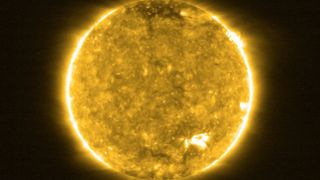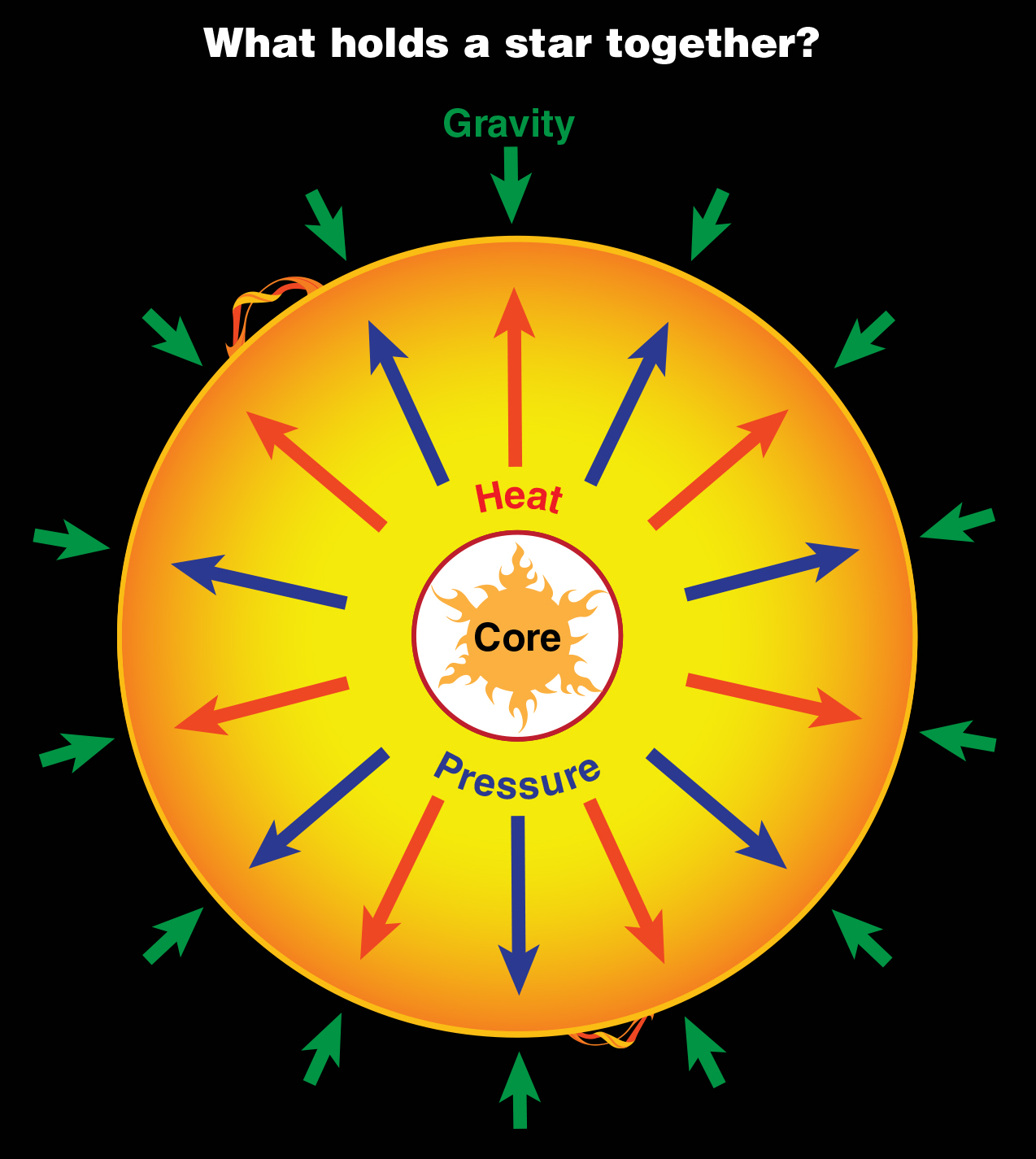The Star gas star Cycle Will Continue Forever
When will the sun die?

If you worry about when the sun will die, never fear: that moment is billions of years away.
The sun gives energy to life on Earth, and without this star, we wouldn't be here. But even stars have limited lifetimes, and someday our sun will die.
You don't need to worry about this solar death anytime soon, though. Like all stars, a churning fusion engine fuels the sun, and it still has a lot of fuel left — about 5 billion years' worth.
Related: What's inside the sun? A star tour from the inside out
Why will the sun die?

Stars like our sun form when a huge cloud of gas (mostly hydrogen and helium) grows so large that it collapses under its own weight. The pressure is so high in the center of that collapsing mass of gas that the heat reaches unimaginable levels, with temperatures so hot that hydrogen atoms lose their electrons.
Those naked hydrogen atoms then fuse together into helium atoms, and that reaction releases enough energy to counter the intense pressure of gravity collapsing the cloud of gas. The battle between gravity and the energy from fusion reactions fuels our sun and billions of other stars in our galaxy and beyond.
But in about 5 billion years, the sun will run out of hydrogen. Our star is currently in the most stable phase of its life cycle and has been since the formation of our solar system, about 4.5 billion years ago. Once all the hydrogen gets used up, the sun will grow out of this stable phase.
What will happen when the sun dies?
With no hydrogen left to fuse in the core, a shell of fusion hydrogen will form around the helium-filled core, astrophysicist Jillian Scudder wrote in an article for The Conversation (opens in new tab). Gravitational forces will take over, compressing the core and allowing the rest of the sun to expand.
Our star will grow to be larger than we can imagine — so large that it will envelope the inner planets, including Earth. That's when the sun will become a red giant, which it will remain for about a billion years.
Then, the hydrogen in that outer core will deplete, leaving an abundance of helium. That element will then fuse into heavier elements, like oxygen and carbon, in reactions that don't emit as much energy. Once all the helium disappears, the forces of gravity will take over, and the sun will shrink into a white dwarf. All the outer material will dissipate, leaving behind a planetary nebula.
"When a star dies, it ejects a mass of gas and dust — known as its envelope — into space. The envelope can be as much as half the star's mass," astronomer Albert Zijlstra of the University of Manchester in the United Kingdom, said in a statement (opens in new tab). "This reveals the star's core, which by this point in the star's life is running out of fuel, eventually turning off and before finally dying."
Astronomers estimate that the sun has about 7 billion to 8 billion years left before it sputters out and dies. One way or another, humanity may well be long gone by then.
No supernova, no black hole
Our sun isn't massive enough to trigger a stellar explosion, called a supernova, when it dies, and it will never become a black hole either.
In order to create a supernova, a star needs about 10 times the mass of our sun. An object of that size would form a dense stellar corpse called a neutron star after the explosion.
To leave behind a black hole, a supernova must occur in a star with about 20 times the mass of the sun.
Additional resources
Find out what will happen to the Earth (opens in new tab) when the sun dies, from Live Science. Learn more about how stars form, evolve and die (opens in new tab) from NASA, and learn more about how the agency studies our sun (opens in new tab). Watch a mini documentary on the topic, The Death of the Sun (opens in new tab), from PBS Space Time.
Bibliography
- Gesicki, K., "The mysterious age invariance of the planetary nebula luminosity function bright cut-off," Nature Astronomy (2018). https://www.nature.com/articles/s41550-018-0453-9 (opens in new tab)
- NASA, "Our Sun — In Depth," last updated Oct. 15, 2021. https://solarsystem.nasa.gov/solar-system/sun/in-depth/ (opens in new tab)
- NASA, "Why the Sun Won't Become a Black Hole," Sept. 26, 2019. https://www.nasa.gov/image-feature/goddard/2019/why-the-sun-wont-become-a-black-hole (opens in new tab)
Join our Space Forums to keep talking space on the latest missions, night sky and more! And if you have a news tip, correction or comment, let us know at: community@space.com.
Source: https://www.space.com/14732-sun-burns-star-death.html